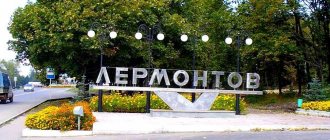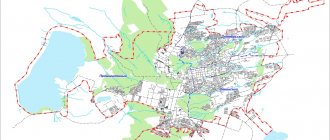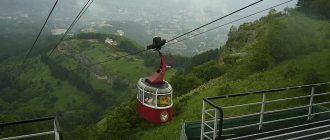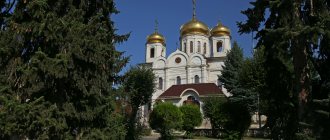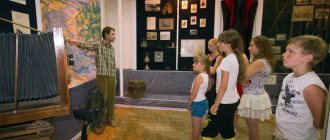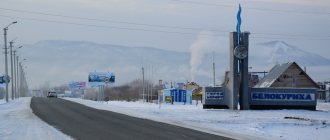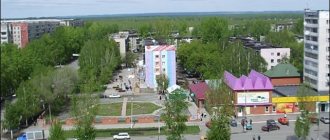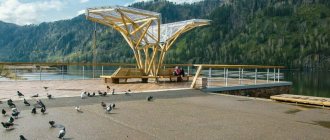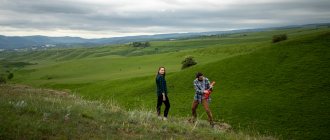City in Stavropol Krai, Russia
| Georgievsk Georgievsk | |
| Town[1] | |
| St. Nicholas Church of St. George's Fortress | |
| Flag Coat of arms | |
| Georgievsk | |
| Georgievsk Georgievsk Show map of Russia Georgievsk Georgievsk (Stavropol Territory) Show map of Stavropol Territory | |
| Coordinates: 44°09′N 43°28'E / 44.150°N Latitude 43.467°E / 44.150; 43.467Coordinates: 44°09′N 43°28'E / 44.150°N Latitude 43.467°E / 44.150; 43.467 | |
| A country | Russia |
| Federal subject | Stavropol region[1] |
| [2] | 1777 |
| City status from | 1786[2] |
| Height | 300 m (1000 ft) |
| population (2010 Census)[3] | |
| • General | 72,153 |
| • Evaluate (2018)[4] | 67,714 (−6.2%) |
| • Classify | 218th in 2010 |
| Administrative status | |
| • Subordinate | city of regional significance Georgievsk[1] |
| • Capital from | city of regional significance Georgievsk[1], Georgievsky district[1] |
| Municipal status | |
| • Urban district | Georgievsky urban district[5] |
| • Capital from | Georgievsky urban district[5], Georgievsky municipal district[5] |
| Timezone | UTC + 3 (MSK [6]) |
| Postal code(s)[7] | 357820 |
| OKTMO I WOULD | 07707000001 |
| Web site | www.georgievsk.RU |
Georgievsk
(Russian: Georgievsk) (Ossetian: Guym) is a historic town in Stavropol Krai, Russia, located in the North Caucasus on a foothill plateau on the right bank of the Podkumok River (a tributary of the Kuma River), 210 kilometers (130 mi) southeast of Stavropol. Population: 72,153 (2010 Census).[3]
Story
Founded in September.[ quote needed
] 1777 as St. George fortress[2] on the Azov-Mozdok defense line. In 1783, the Peace of Georgievsk was signed in Georgievsk between the Russian Empire and the Kingdom of Kartli-Kakheti, which made the eastern Georgian kingdom a Russian protectorate. After 1785 Georgievsk grew significantly. It was granted city status in 1786.[2] After 1802, the residence of the Caucasian province was located here. The beginning of the 19th century marked the peak of Georgievsk's influence as a trading center. After 1822, the city's influence began to wane.
In 1875, a railway station was built in Nezlobnaya. This marked a new beginning in the development of the city. In 1894 the first forging plant was founded. This was the beginning of the largest enterprise in the city, ArZiL. In 1900, a slaughterhouse and creamery were founded. In the 1920s, Georgievsk became a major industrial and commercial center of the Ciscaucasia.
During World War II, Georgievsk was under German occupation from August 15, 1942 to January 10, 1943. After the war, Georgievsk became the largest mechanical engineering center in the Stavropol Territory.
Magnificent St. George's temples and churches
Georgievsk is a city of different cultures and nationalities. The churches existing there reflect the national flavor and spiritual values of the people of St. George.
Cathedral of St. George the Victorious
- Address: st. Builders, 2.
The Church of St. George the Victorious became the first cathedral of Georgievsk since the Resurrection Cathedral, which was destroyed in the 1930s.
Construction of the St. George Church took place in the early 2000s. The project implied a whole memorial complex with an adjacent park. Thanks to this, the green zone of Georgievsk has expanded significantly. The park took the place of an overgrown ancient cemetery. It is now a popular destination for outdoor recreation.
The cathedral is made in the Russian-Byzantine style. Five massive light drums are covered with golden bulbs. The facade is decorated with spinning wheels, kokoshniks, rusticated stone and friezes. The building's design also includes a bell tower located above the front porch.
Today the temple is operational, with a Sunday school, an Orthodox library and theological clubs open.
Armenian Apostolic Church of Surb Gevorg
- Address: Oktyabrskaya street, 147A.
In 1793, the first Armenian Apostolic Church was built in Georgievsk. In the 1930s it was divided, giving one part of the premises for Orthodox services. During the German occupation, the ancient temple burned down.
Construction of the new temple lasted 15 years and was completed in 2011. The building is made of pink tuff. The facade decor amazes the imagination with its sophistication: the walls are decorated with bas-reliefs with views of the most revered Armenian churches in the world, the windows are decorated with forged grilles, the patterns of which combine vines, pomegranates and crosses. On the doors you can see carvings based on biblical motifs.
The modern temple is recognized as a cultural and architectural monument. In addition to worship services, it hosts various religious forums aimed at educating children and youth.
Economy
Today Georgievsk is one of the largest industrial cities in the region with an auxiliary plant, repair and engineering work, a nail plant, a semiconductor plant, an acoustic and insulating materials plant, a brick plant, two asphalt processing plants, a clothing, shoe and fur plant, as well as a number of enterprises food processing plant, including the HJ Heinz baby food plant.
Transport
Georgievsk is a railway junction with access to Moscow, St. Petersburg, Minsk, Krasnodar, Rostov-on-Don, Grozny, Vladikavkaz, Mineralnye Vody, Prokhladny, Budennovsk, and Nezlobnaya.
Public transport consists mainly of minibuses
(minibus taxis).
Demography
Georgievsk MSA is the second largest in the Caucasian Mineral Waters region. a suburb of 1.1 million inhabitants in the center of the North Caucasus.[ citation needed
]
Historical population
- 1897 Census: 11,000;
- 1914 Census: 21,200;
- 1939 Census: 31,600;
- 1959 Census: 35,100 people;
- 1970 estimate: 44,000;
- 1979 Census: 53,600 people;
- 62,926 (1989 Census);[8]
- 70,575 (2002 Census);[9]
- 72,153 (2010 Census).[3]
Urban planning
Georgievsk has a rectangular layout in the city center - a legacy of the fortress. The old city center was located on the high bank of the Podkumok River next to the St. Nicholas Church - the oldest Orthodox church in the Stavropol Territory and a monument of wooden architecture of the 18th century.
The modern city center was built in the early 20th century around the fairgrounds. The best examples of architecture from this period are the Old Town Hall, the former Louvre Hotel, the former London Hotel, and public high schools No. 1 and No. 3. The first enterprises were then built north of the city center. In the 20-30s of the 20th century, the area near the station was built up. After World War II, Georgievsk grew rapidly in the western residential areas and northern industrial areas. From the 1970s to the 1990s, several high-rise buildings were built in the southwest of the city. Today, the main part of Georgievsk is a residential area. Multi-storey buildings are located in the central part of the city and in the Berezka microdistrict. The city has three industrial zones, the largest of which is to the north of the city.
One of the local attractions is the Georgievsky skyscraper, a twelve-story building overlooking Georgievsk, the Stavropol steppe and the Caucasus Mountains.
Children's entertainment in Georgievsk
A resort town cannot do without children's entertainment. In Georgievsk, tourists are offered a large selection of leisure centers and places for walks, where you can go with children and what is definitely worth seeing with your child.
Friendship Park
- Address: st. Kalinina/st. Batakskaya.
Friendship Park is a modern open-air leisure complex. There is complete freedom for children here. On the territory of the park there are children's playgrounds with slides, sandboxes and swings, and cobwebs.
Some slide complexes are made of wood in the form of castles, others are bright structures with pipes and tunnels. Older children will be interested in riding scooters, rollerblades and bicycles. For sports lovers, there is a complex of trampolines and slides. The sports area also includes exercise equipment.
Interestingly, you can ride ponies and horses in the park. During the horseback ride, tourists will visit the park's attractions: fountains, sculptures, arches and picturesque alleys.
It is good to visit the park in the evening, when the garlands are lit and the fountains are illuminated. At this time, young people gather here and organize musical events and sometimes light shows.
Park of Culture and Leisure (Central Park)
- Address: st. Gagarina/st. Oktyabrskaya.
Lovers of attractions should go to the Culture and Recreation Park. Attractions are its main asset. There is a Ferris Wheel, a gaming complex, an autodrome, a Solar System carousel and much more.
Sculptures of cartoon characters, as well as fountains and flower beds give the park a colorful look. For couples in love, a sculpture “Two Hearts” was installed. Young people fasten the locks on it.
In addition to entertainment, the Culture and Recreation Park pays attention to military-patriotic education. In the memorial area there is a monument “Weapons of Victory”, as well as monuments honoring the 75th anniversary of the Victory. It is a painting “Storm of Berlin” made from photographs of veterans.
Also be sure to see: Sights of the Stavropol Territory and What to see in Stavropol
Tourism
At the corner of Victory Square and Pyatigorskaya Street there is the Old Town Hall with a 20th century bell tower. In another corner of the square, opposite the Central Pharmacy, stands the Monument to the Friendship of Peoples. This is the beginning of Golovinsky Boulevard. The quiet road is very short and ends at the Eternal Flame on Oktyabrskaya Street.
On Old Boulevard, visitors can see the Youth Palace, located in the building of the Georgievsky City Bank, the best example of modern architecture in the city. On the boulevard there are several cafes and restaurants with buildings of different ages and architectural styles. The Old Boulevard leads to the Central City Park. It is small, but was recently reconstructed and now has several attractions.
The new boulevard leads to the historical center of the city along Lermontov Street. To the left is the city museum in a building known as Dara. It was built at the beginning of the 20th century. The owner was the producer of the city's first amateur theater. On the right is the Tumasov mansion with lions on top of the gate and the huge Palace of Culture. The palace is now a drama theatre, but was once a town meeting hall.
At the end of the New Boulevard is the Stela, a twenty-meter high monument dedicated to the 200th anniversary of the signing of the Peace of St. George. Until the 1930s, the Ascension Cathedral, similar to the Cathedral of Christ the Savior in Moscow, stood here.
Behind the stele is Oktyabrskaya Street through Old Georgievsk. The street runs high above the Podkumok River, offering views of the Caucasus Mountains. Mount Kazbek to Mount Elbrus, Podkumok forest and the lower part of the city. Nearby is the most important monument of Georgievsk - St. Nicholas Church, moved to the St. George Fortress from the Khopyor River in the 1780s. This is the only church not demolished by the Soviet authorities. This is the old city center, the location of the St. George Fortress.
The remaining areas of Georgievsk are of little interest to tourists. Among the local souvenirs is local wine “St. George’s Fortress”. Georgievsk is one of the largest centers for the sale of fur products in Russia, and many products are available on the central market.
On the way to Pyatigorsk there are old Cossack villages—Nezlobnaya, Lysogorskaya, Goryachevodsk. Very beautiful wooden church of the Nativity of the Blessed Virgin Mary
(Birth of the Blessed Virgin Mary), built in 1886, is located in the center of Lysogorskaya.
War memorials and monuments in Georgievsk
Georgievsk has survived many wars. Residents of the modern city do not forget about the exploits of their fellow countrymen, honor the memory of fallen heroes and erect monuments that bind generations in common grief and pride.
Mass grave of civilians shot by the White Guards
- Address: Oktyabrskaya street.
The year 1922 was remembered by the residents of St. George for the brutal terror of the White Guards. In one day they shot dozens of civilians who supported the communist government. Those executed were buried in a common grave within the city.
In the 1930s, a stele was erected on this site. At its top is a globe with a red star and a communist banner. The memorial has been restored several times, but never replaced with a new structure. This is one of the oldest authentic monuments of Georgievsk.
Mass grave of Soviet soldiers
- Address: Oktyabrskaya street.
In the 1940s, soldiers who fought for the liberation of the city from the Nazis were buried next to the burial sites of the victims of the White Guard terror. The tombstone on this grave is a granite wall with a bronze bas-relief of soldiers rushing into battle and a large date - 1945.
Nearby there is a stele with a memorial inscription and an engraved drawing of a soldier’s helmet and carnations. The Eternal Flame is lit at the foot of the stele. The memorial composition is completed by a number of granite slabs with the names of the soldiers who fell during the liberation of Georgievsk.
Monument to the fallen soldiers and citizens during the Great Patriotic War
- Address: Station Square.
The monument was erected on the station square in 1949. It is a white marble stele with an engraved portrait of a Soviet soldier. His gaze is directed to the Eternal Flame. The place was not chosen by chance.
In 1943, soldiers killed in battle were buried here. The square in front of the memorial is the main venue for ceremonial rallies in honor of Victory Day. There are always fresh wreaths at the foot of the monument.
Memorial "Weapon of Victory"
- Address: Central Park.
On May 9, 2001, the grand opening of a new war memorial, the T-34-85 tank, took place in Central Park. The tank is placed on a pedestal made of stone blocks. Artillery cannons are installed next to it.
The equipment is genuine; in 1943, these were the guns that took part in the liberation of Georgievsk. Every year on Victory Day, grateful descendants pay tribute to the memory of the liberating heroes by laying flowers at the foot of the “Weapon of Victory”.
Monument to St. George the Victorious
- Address: Kalinina street.
St. George the Victorious is the patron saint of warriors, the great martyr, after whom the city is named. A monument to him was erected in 2022 during the celebration of the 240th anniversary of the founding of the city. The bronze sculpture is amazingly detailed.
The chain on the horse's harness, the dragon's scales, George's armor - everything was done as accurately and painstakingly as possible. The Monument to St. George is one of the iconic monuments of the city, as well as a symbol of its military glory.
Recommendations
Notes
- ^ a b c d f g gram
Resolution No. 63-r - ^ a b c d Encyclopedia of Russian Cities
. Moscow: Great Russian Encyclopedia. 2003. p. 107. ISBN 5-7107-7399-9. - ^ a b c
Federal State Statistics Service of Russia (2011).
“All-Russian Population Census 2010. Volume 1" [All-Russian Population Census 2010, vol. 1]. All-Russian Population Census 2010 [All-Russian Population Census 2010]
(in Russian). Federal State Statistics Service. - "26. The size of the permanent population of the Russian Federation by municipalities as of January 1, 2022.” Federal State Statistics Service. Retrieved January 23, 2022.
- ^ a b c d
Law No. 88-kz - "On the calculation of time." Official Internet portal of legal information
(in Russian). June 3, 2011. Retrieved January 19, 2022. - Post office. Information and computing center of OASU RPO. ( Post office
).
Search for postal facilities ( Search for postal facilities
) (in Russian) - “All-Union Population Census of 1989. The actual population of union and autonomous republics, autonomous regions and districts, territories, regions, urban settlements and villages of Stavropol Pravda,” No. 216, October 6, 2004 (State Duma of the Stavropol Territory. Law No. 88 -KZ dated October 4, 2004 On assigning the status of urban, rural settlement, urban district, municipal district to municipalities
As amended by Law No. 51-KZ dated May 28, 2015
On the transformation of municipal formations within the Mineralovodsk municipal district of the Stavropol Territory (Mineralovodsk territorial municipal formation of the Stavropol Territory) and on the organization of local self-government in the territory of the Mineralovodsky district of the Stavropol Territory
. Valid from the date of official publication.).
Religion
In June 2012, the Holy Synod made changes regarding the Stavropol diocese.
The Diocese of Georgievsk was formed within the administrative boundaries of the Aleksandrovsky, Arzgirsky, Blagodarnensky, Budennovsky, Georgievsky, Kursk, Levokumsky, Neftekumsky, Novoselitsky, Sovetsky and Stepnovsky districts of the Stavropol Territory. The diocesan bishop of the Georgievsk diocese will have the title “Georgievsky and Praskoveysky”. Temporary administration of the Diocese of St. George was entrusted to His Eminence Kirill of Stavropol and Nevinnomyssk. On December 13, 2012, during the divine liturgy at the consecration of the Kazan Cathedral in Stavropol, His Holiness Patriarch Kirill of Moscow and All Rus' consecrated Archimandrite Gideon (Gubka) as Bishop of St. George and Praskovey. Bishop Gideon is the ruling bishop of the Georgievsk and Praskovey diocese.
Within the Stavropol Territory, the Stavropol Metropolis was established, which includes the St. George and Stavropol dioceses, as well as the deaneries of the Pyatigorsk diocese, located on the territory of the Stavropol Territory. His Eminence Kirill of Stavropol and Nevinnomyssk was appointed head of the Stavropol Metropolis.
